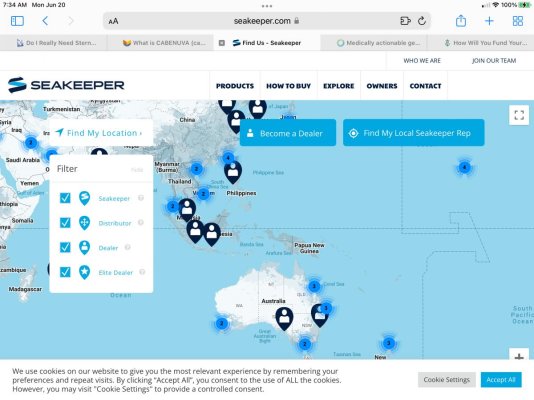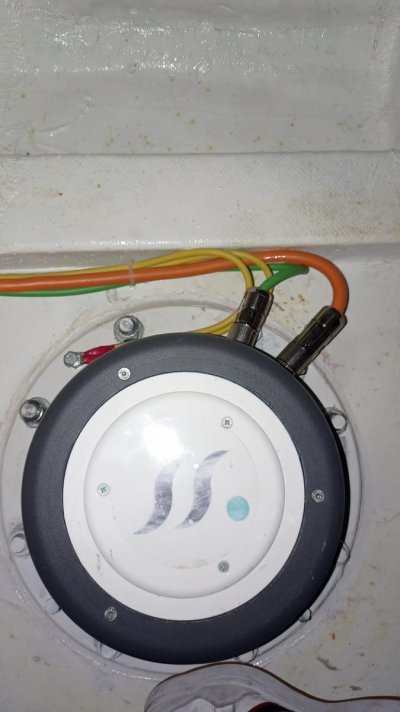Hippocampus
Guru
- Joined
- Jul 27, 2020
- Messages
- 3,908
- Location
- Plymouth
- Vessel Name
- Hippocampus
- Vessel Make
- Nordic Tug 42
Think there’s little question stabilization is worth the money and effort. About that there’s a general consensus. The discussion is which type.
Fish are quite limiting for many people. Require significant depth for deployment and significant effort as well. Need to go to storage position (except possibly in some anchorages) when not in use. Not an issue for voyaging boats but a real issue for those utilizing a boat intermittently in a coastal setting. Canadian warning that they may decrease ultimate stability if one fails maybe overwrought but not without supporting data.
Fins increase wetted surface, turbulence in use so parasitic drag. Hence increase fuel burn. Should be tuned in surface area for expected speed through the water. That maybe ideal for FD hulls running with very limited different speeds but not for SD hulls with wide variation in speeds of operation. Damage with groundings or strikes maybe overwrought but does occur.
Gyros need genset running on virtually all boats. In all but extreme weather said to be the most effective mode of stabilization. Takes time to spin up or down. From limited experience found this to be a non issue as weather forecasting is adequate to know well in advance if needed. But downside of ~3/4 g/h of fuel burn exists. Comparing to lost speed or fuel burn of fins is case specific but one would think gyros are more energy hungry. Gyros in vacuums said to be more effective, spin faster, less energy intensive per rpm than non vacuum but at expense of breaking and reestablishing vacuum if internal service required.
Magnus said to be as effective as gyros. Retract so less issues in skinny or debris laden waters. Less energy intensive. However do create drag (same as fins) more pronounced at higher speeds. Minimal drag if not deployed.
Not an expert but think above is a decent summary. Nothing is perfect or suitable in all settings. In choosing for a new build as per O.P. would think decision should be driven upon what he intends to do and where.
Fish are quite limiting for many people. Require significant depth for deployment and significant effort as well. Need to go to storage position (except possibly in some anchorages) when not in use. Not an issue for voyaging boats but a real issue for those utilizing a boat intermittently in a coastal setting. Canadian warning that they may decrease ultimate stability if one fails maybe overwrought but not without supporting data.
Fins increase wetted surface, turbulence in use so parasitic drag. Hence increase fuel burn. Should be tuned in surface area for expected speed through the water. That maybe ideal for FD hulls running with very limited different speeds but not for SD hulls with wide variation in speeds of operation. Damage with groundings or strikes maybe overwrought but does occur.
Gyros need genset running on virtually all boats. In all but extreme weather said to be the most effective mode of stabilization. Takes time to spin up or down. From limited experience found this to be a non issue as weather forecasting is adequate to know well in advance if needed. But downside of ~3/4 g/h of fuel burn exists. Comparing to lost speed or fuel burn of fins is case specific but one would think gyros are more energy hungry. Gyros in vacuums said to be more effective, spin faster, less energy intensive per rpm than non vacuum but at expense of breaking and reestablishing vacuum if internal service required.
Magnus said to be as effective as gyros. Retract so less issues in skinny or debris laden waters. Less energy intensive. However do create drag (same as fins) more pronounced at higher speeds. Minimal drag if not deployed.
Not an expert but think above is a decent summary. Nothing is perfect or suitable in all settings. In choosing for a new build as per O.P. would think decision should be driven upon what he intends to do and where.
Last edited:


